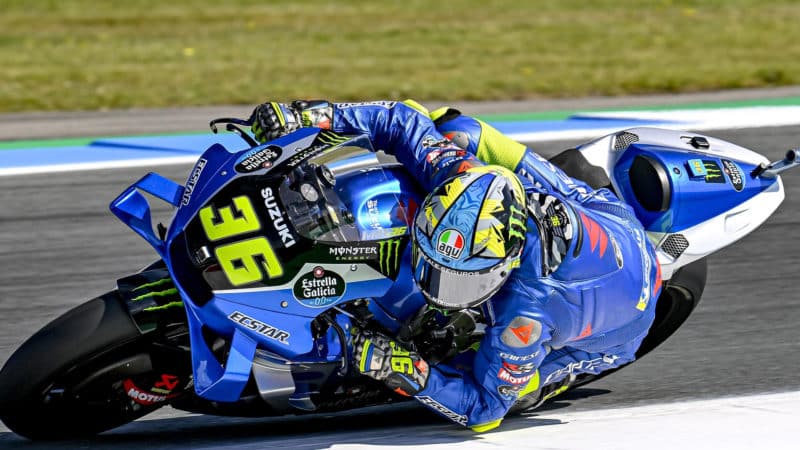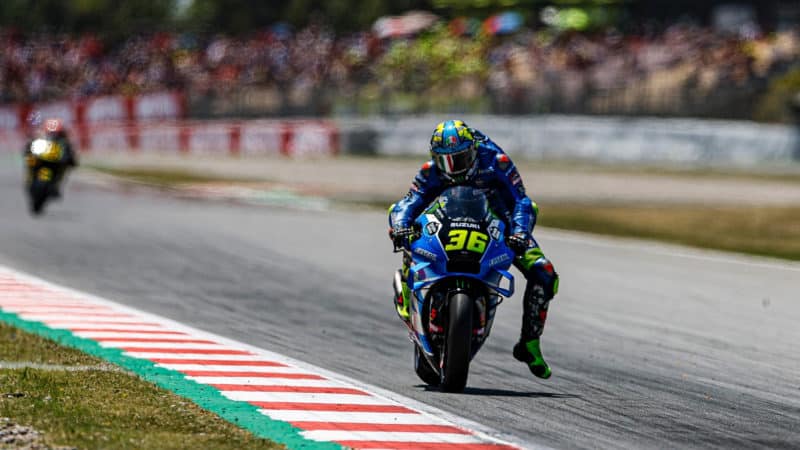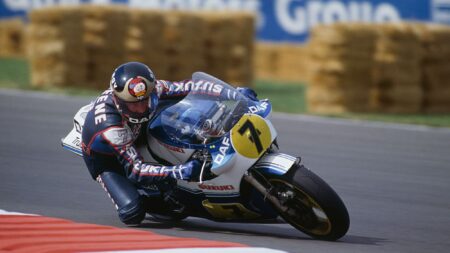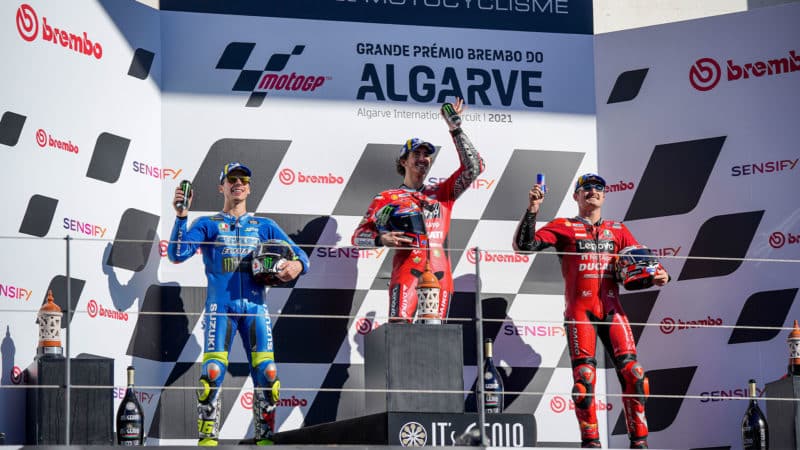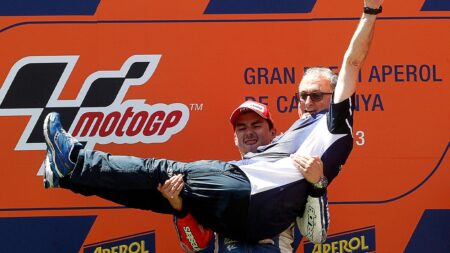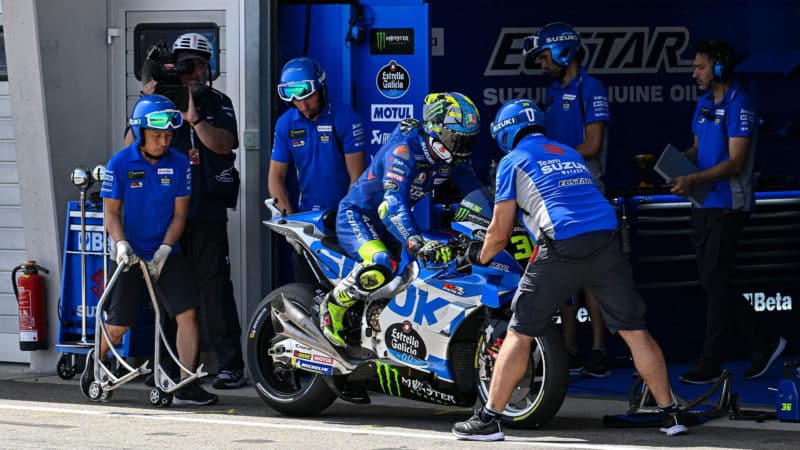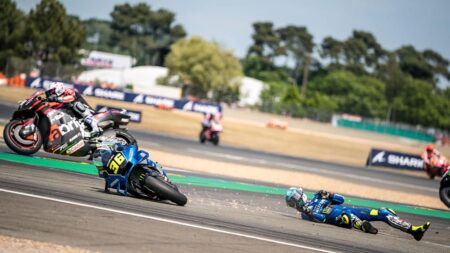If you push the front tyre too much you go wide, you miss the apex and you cannot accelerate as early as you need to. The target is always the same: to stop the bike in less metres, turn the bike and then accelerate in the correct way.
Do you use a lot of engine-brake or do like the bike to be freer?
How much engine-brake you use depends on how you use the rear brake. Some riders use more engine-brake and then use less rear brake to compensate. I’m quite balanced – I don’t use a lot or a little engine-brake, then I use the rear brake to adjust as I want, depending on grip, the type of corner and so on.
You have MotoGP’s biggest knee rests fitted to your bike – are they only for braking or do you also use them to help turn the bike with your legs?
I just use them for braking. Usually all the power you use in braking comes from your arms, so if you can help with your knees then you use less upper-body power during braking, which gives more stability and also saves upper-body energy.
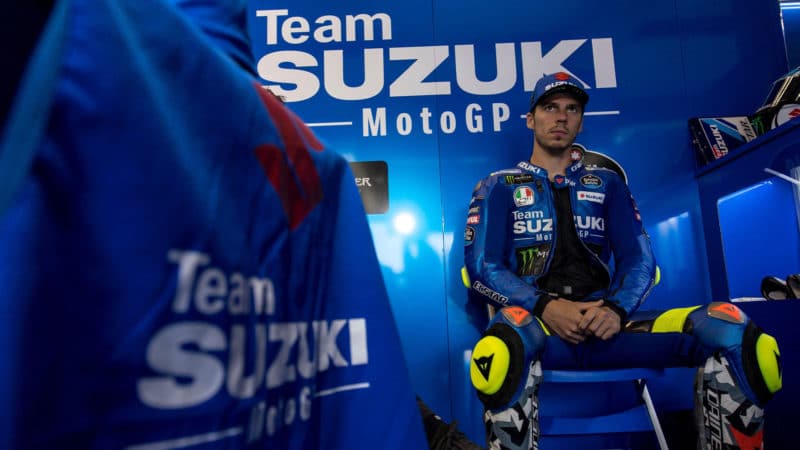
Mir relies a lot on his natural talent but he never stops thinking
Suzuki
Why do you use the leg dangle on the brakes?
Often now I do this unconsciously. I think I use it to stabilise myself and the bike and also to make myself a bit lower, to stop too much weight transfer on the brakes.
KTM rider Brad Binder says that taking his foot off the footpeg also helps him put more weight into the handlebar to help him counter-steer into the corner. Do you do that?
No, Brad’s style is a bit strange! I do see him doing that!
The most important thing is getting the bike turned, so you’re trying to get the bike down to the correct speed, so it’ll turn. The Suzuki obviously turns very well and if I think of some particular corners, like Turn 1 at Red Bull Ring, it looks like you’re on the brakes going straight, then you’ve turned the bike to the right in, like 0.001 seconds. How is this possible?
That corner fits my style and our bike quite well. I like to brake really hard, put the bike on angle and open early. So in that corner when we release the brake and go into the turn I think the others are still braking to make the bike turn. This is why, even in previous years without the ride-height device and good horsepower, we usually had some of the best times in sector one at Red Bull Ring.
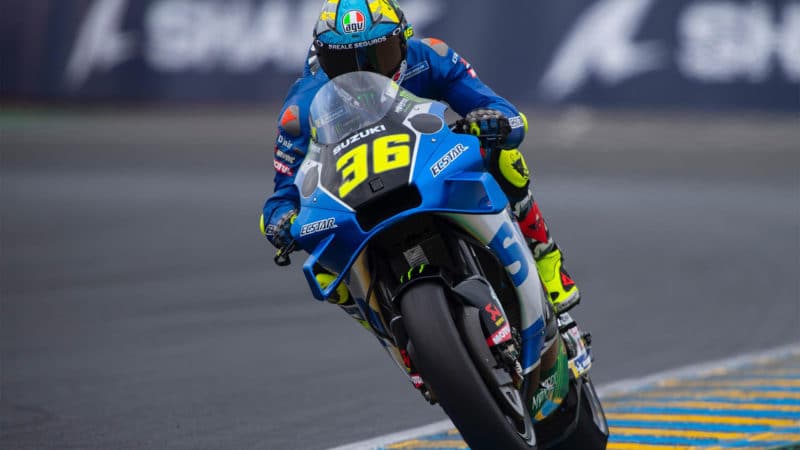
Mir accelerating out of the last corner at Le Mans – full throttle and rear ride-height device engaged
Suzuki
We usually see you laying rubber when you exit that corner, but it doesn’t look like wheelspin…
Because if you stop in less metres you can open the gas earlier, still with a lot of lean angle.
Are you at 100% throttle there while the torque map controls everything?
No, but you turn the last part with a bit of throttle, when the bike is more upright.
